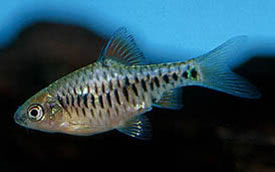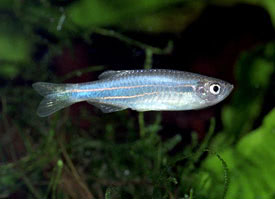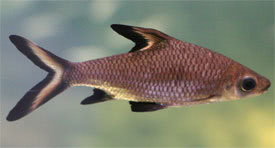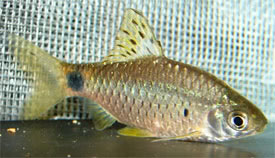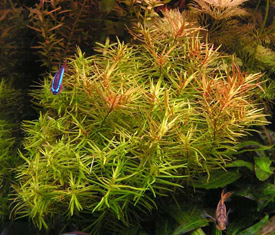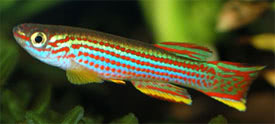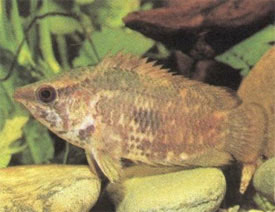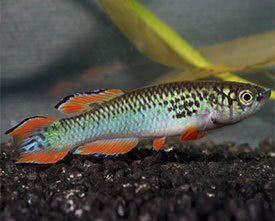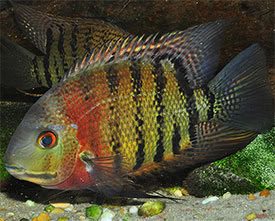
 Magyarul / Hungarian
Magyarul / Hungarian
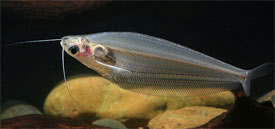
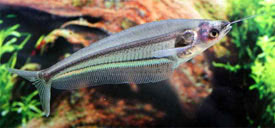
- Scientific name: Kryptopterus bicirrhis
- Synonyms: Silurus bicirrhis
- Common name: Glass catfish, Ghost catfish
- Group: Catfishes
- Habitat: Asia; Thailand, Malaysia and Indonesia
- Size: 15 cm
- Biotope: Inhabits large, fast-flowing rivers with turbid waters, usually occurs along the shores. Also enters flooded fields.
- Social behavior: A quite peaceful community fish that should be kept in a shoal of at least six fish, though it may predate on smaller fishes. Do not combine with large, aggressive species.
- Diet: Omnivorous; In nature it is chiefly a predator feeding on invertebrates and smaller fish. Can be fed with live and frozen foods, such as tubifex and bloodworm.
- Breeding: Very rare in aquarium.
- Tank: Minimum 120 litres
- Population: 6-8 fish for 150 litres
- Decoration: The tank should have a moderate to strong current and dark substrate. A cover of floating plants is recommended to dim the light.
- Temperature: 20-28 °C
- pH: 5,5-6,8
- Hardness: 5-15NK°
- Lifespan: 6-8 years
Description: Its body is elongated and laterally compressed. Glass catfish is scaleless and lacks body pigment, thus making the body transparent. The internal organs and backbone are clearly visible, but not that translucend as its relative the Indian glass catfish (Kryptopterus vitreolus). It has long been identified in aquarium literature as Indian glass catfish, but Kryptopterus bicirrhis becomes about 15 cm long which is much more that Kryptopterus vitreolus (about 7 cm). Kryptopterus bicirrhis is very rare in the hobby. Kryptopterus bicirrhis also very similar to Kryptopterus minor, which originates from the island of Borneo and has in all probabilty never been imported as an ornamental fish. A long pair of barbels are located on the upper jaw. The dorsal fin is very small, consisting of only one ray, while the caudal fin is forked.
Adult males should appear noticeably slimmer than females. Breeding is rare and usually accidental.















